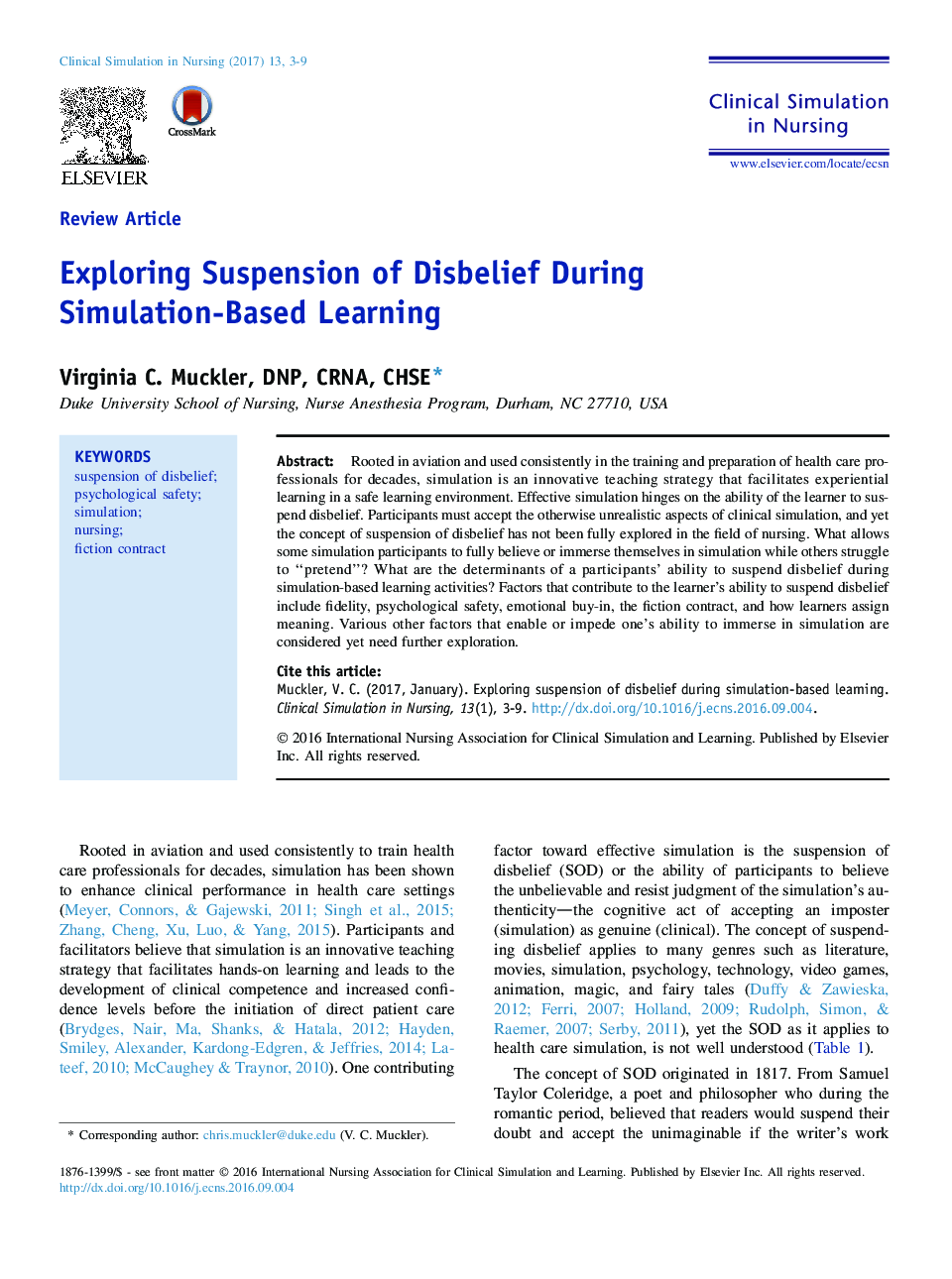| Article ID | Journal | Published Year | Pages | File Type |
|---|---|---|---|---|
| 5567512 | Clinical Simulation in Nursing | 2017 | 7 Pages |
â¢Suspension of disbelief is explored as it pertains to simulation.â¢Factors that contribute to the learner's ability to suspend disbelief are suggested.â¢The ability to suspend disbelief enhances the participant's level of immersion in the simulation.â¢Various determinants enable or impede one's ability to immerse in simulation.
Rooted in aviation and used consistently in the training and preparation of health care professionals for decades, simulation is an innovative teaching strategy that facilitates experiential learning in a safe learning environment. Effective simulation hinges on the ability of the learner to suspend disbelief. Participants must accept the otherwise unrealistic aspects of clinical simulation, and yet the concept of suspension of disbelief has not been fully explored in the field of nursing. What allows some simulation participants to fully believe or immerse themselves in simulation while others struggle to “pretend”? What are the determinants of a participants' ability to suspend disbelief during simulation-based learning activities? Factors that contribute to the learner's ability to suspend disbelief include fidelity, psychological safety, emotional buy-in, the fiction contract, and how learners assign meaning. Various other factors that enable or impede one's ability to immerse in simulation are considered yet need further exploration.
